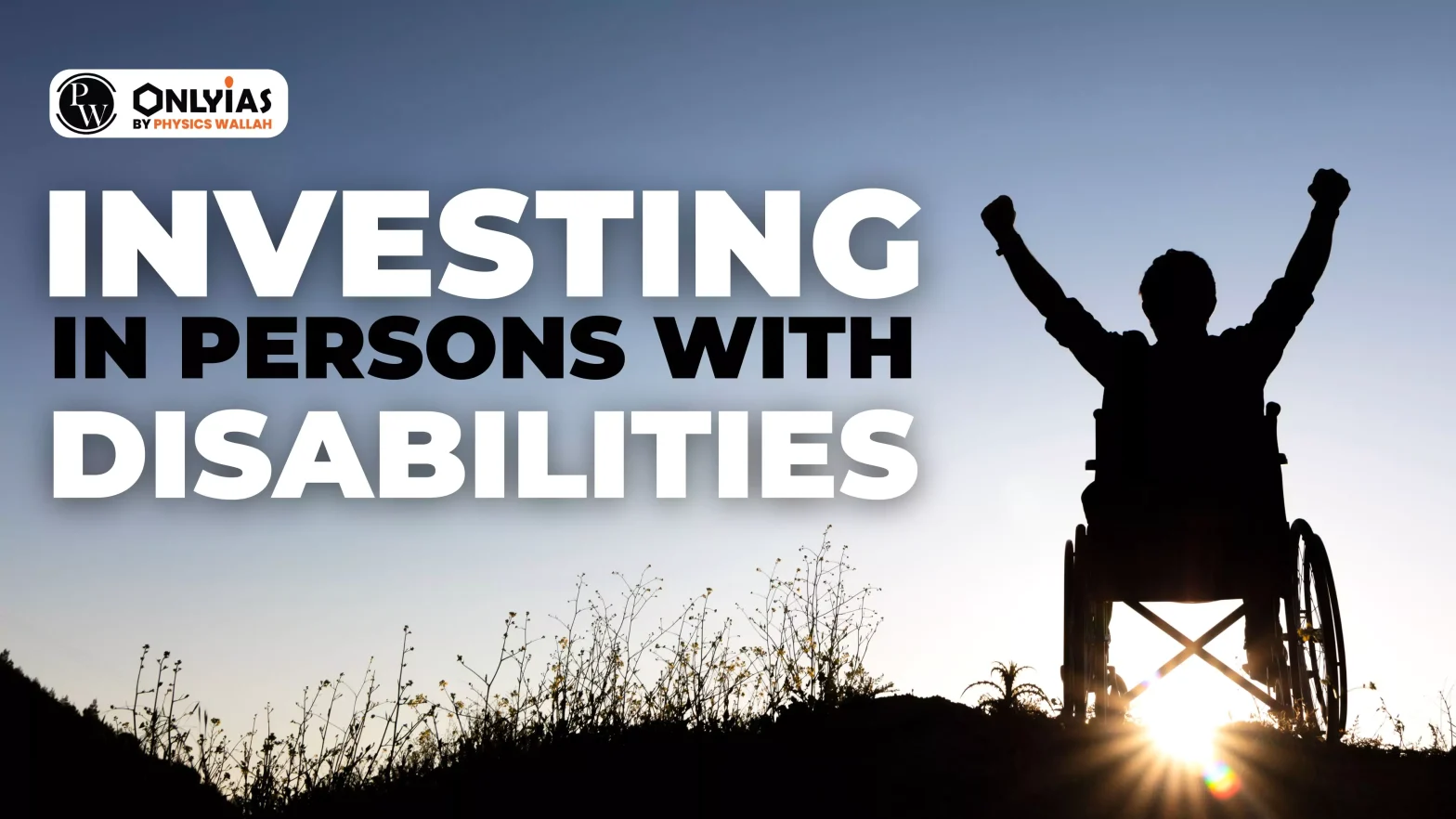The recent Hindi movie Srikanth, starring Rajkummar Rao, portrays the inspiring story of Srikanth Bolla, an industrialist who triumphs over visual impairment. In the film, Srikanth’s family faces pressure from the villagers, discouraging them from investing in his education or future. This scenario highlights a broader societal issue, where many parents of children with disabilities are made to believe that their children are not worth the investment in their growth and potential.
Challenges Faced by PwDs
- Social Stigma: Persons with disabilities (PwDs) often encounter stigma and marginalisation.
- Discrimination: Individuals with disabilities often face significant discrimination in education and employment. In the movie, for example, Srikanth Bolla is denied admission to the science stream due to his visual impairment, despite his strong academic performance and determination. This instance reflects a broader issue where individuals with disabilities are frequently unjustly excluded from opportunities based on prejudiced assumptions about their capabilities.
- Struggle for Dignity: PwDs frequently struggle to maintain their dignity amidst these challenges.
- Educational Institutions: Institutions often lack the necessary infrastructure and support mechanisms to adequately support students with disabilities.
- Workplaces: Workplaces frequently lack robust diversity policies, resulting in insufficient representation and support for persons with disabilities (PwDs).
Enroll now for UPSC Online Classes
Status of Education and Jobs for PwDs
- Employment:
- 2023 Report: According to a 2023 report by Nifty 50 companies, only five out of 50 companies employ more than 1% persons with disabilities (PwDs), with four of these being public sector companies.
- Legislative Mandates: Despite legislative mandates for reservations and equal opportunity policies for PwDs, many employers have not fully implemented these measures.
- Model Example: Brazil’s model requires companies with over 100 employees to ensure PwDs make up 2%-5% of the workforce, with fines for non-compliance. Japan offers subsidies to employers of PwDs.
- Education:
- Accessibility Issues: Data from the National Centre for Promotion of Employment for Disabled People shows that:
- Less than 1% of educational institutions are disabled-friendly.
- Less than 40% of school buildings have ramps.
- About 17% have accessible restrooms.
- Sarthak Educational Trust Report: The report highlights that while the Rights of Persons with Disabilities Act, 2016, mandates reservations and incentives, implementation is lacking.
- Need for Inclusive Framework: The Indian education system needs a more inclusive framework similar to:
- Harvard University: Local Disability Coordinators assist PwDs with accommodations.
- Stanford University: Provides support in housing, devices, and has a comprehensive resource centre for PwDs.
- Current Initiatives:
- Shiv Nadar University (2023): It offers personalised support based on the student’s disability, but measures are not institutionalised and lack uniformity.
- UGC Guidelines: The University Grants Commission has draft guidelines for accessible formats in admissions, but the presence of PwDs in higher education remains low.
- The Rights of Persons with Disabilities Act, 2016, replaces the 1995 Act and aligns with the UNCRPD, expanding the definition to include 21 types of disabilities.
- It defines a person with a disability as someone with a long-term impairment that hinders full societal participation, and includes those with high support needs.
- The Act also empowers the government to add more categories of disabilities.
Recommendations
- Investments: Public and private institutions should invest in infrastructure and policies to support PwDs.
- Compliance Mechanisms:Incentives and penalties can drive better adherence to disability inclusion policies. Japan, for instance, has developed a system of subsidiaries for employees who have some form of disability.
Striving for Dignity
- Historical and Societal Portrayal of Disabled People
- David Hevey’s Observation: British artist David Hevey highlighted that the portrayal of disabled people (PwDs) has historically been oppressive and negative. PwDs have often been depicted as socially flawed able-bodied people, rather than as individuals with their own unique identities.
- Sociologist Colin Barnes’s Argument: Sociologist Colin Barnes argues that PwDs are often portrayed as objects of pity, violence, curiosity, and ridicule. They are seen as burdens on society, sexually abnormal, and incapable of community participation. This negative portrayal influences societal attitudes towards PwDs.
- Erosion of Identity:
- Negative Perceptions: PwDs are frequently viewed as pitiful or helpless. There is a common misconception that PwDs can only form relationships with one another. Additionally, the intersection of disability with other factors such as caste or gender can create a compounded burden on individuals.
- Example of Stigmatization: The recent mockery of PwDs by former cricketers in a viral video after India won the World Championship of Legends highlights the persistent stigmatization and lack of respect for PwDs. This mockery reflects the broader societal failure to treat PwDs with dignity.
- Bridging the Gap:
- Abhishek Anicca’s Perspective: In his book, The Grammar of My Body, Abhishek Anicca reflects on the negative perceptions of disabled people, noting that the able-bodied often fail to understand or reach out to PwDs. He emphasizes that it is the responsibility of those who create the distance to bridge the gap and foster understanding and respect.
Check Out UPSC NCERT Textbooks From PW Store
Conclusion
To fully integrate persons with disabilities (PwDs) into society, India needs to enhance both educational and workplace inclusivity through improved infrastructure and effective policies. Adopting global best practices and ensuring robust implementation of legislative mandates are crucial for fostering equal opportunities. Investment in supportive frameworks and compliance mechanisms will be key to achieving meaningful progress for PwDs.
![]() 26 Aug 2024
26 Aug 2024

